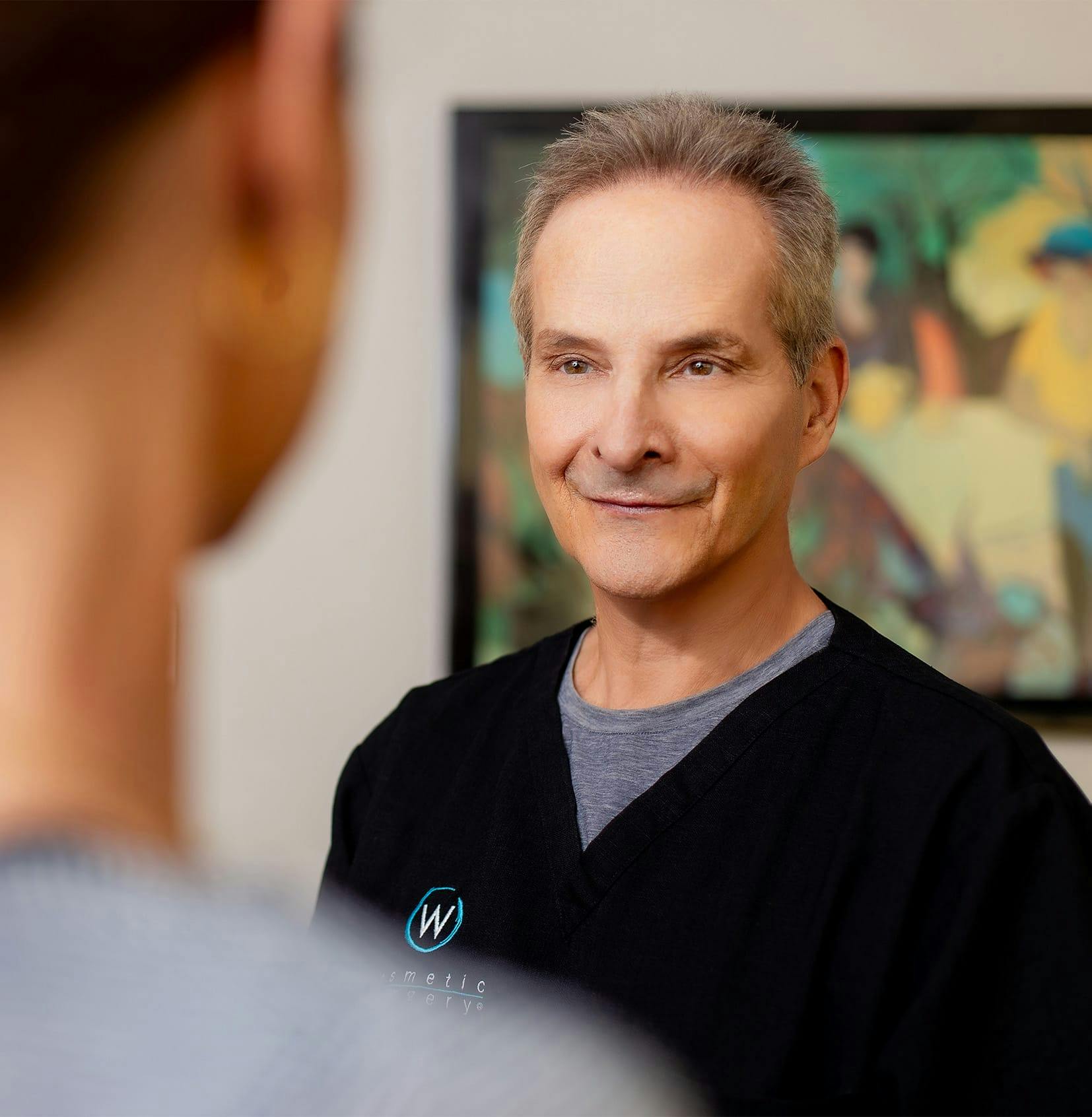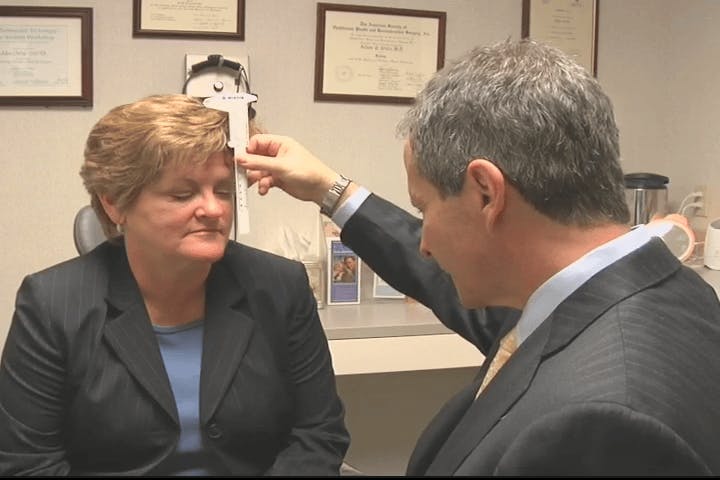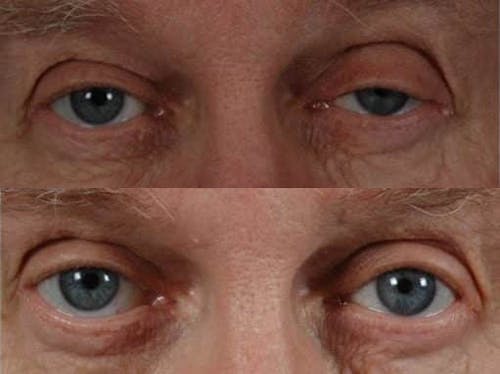Droopy upper eyelids can be due to changes in the muscles that lift the eyelids, due to neurologic causes, or due to mechanical issues (too much skin). Babies can be born with droopy eyelids. Trauma and prior eye surgery can cause drooping of the lids.
What Is Ptosis (A Droopy Eyelid)?
Droopy eyelids develop for many reasons, and a visit to an oculoplastic surgeon almost always begins with an investigation as to why your specific droop occurs. Doctors conveniently divide droopy eyelids into those caused by:
- Myogenic (muscle) issues: Droopy lids caused by the weakening of the muscles or loosening of the attachments to the eyelid. Muscles have tendons that fix to the tissues they lift, and when the muscle or the tendon tears, they cannot do the job of lifting the eyelid as well, so the lid droops. We often see ptosis in patients after eyelid trauma, cataract surgery, glaucoma surgery, or any other eyeball surgery. Chronic trauma to the lids can also be caused by contact lenses. Both the insertion and removal of the lenses pull the lid in various directions, and the lenses themselves may induce chronic inflammation that makes the tendons weaker. Rare conditions of muscle weakness that only affect the eye muscles can also cause eyelid drooping. You can also be born with a weakness or the muscles or nonattachment of the tendons; this is called congenital ptosis.
- Mechanical issues: Drooping of the upper eyelids due to excess skin or the eyebrow’s weight on the skin. In these situations, redundant skin folds over the upper eyelid and occasionally makes its way onto the lashes.
- Neurologic issues: A disruption in the pathway between the nerves that signal lid lifting to the muscles that actually do the lifting. This can be seen in a condition known as ocular myasthenia. Establishing this diagnosis requires several tests. In this situation, the droop can be treated with pills rather than surgery. There can also be a malfunction of the nerves, such as with a stroke, or a tumor growing near the nerve, gradually affecting its function. A sudden eyelid droop can be an emergency and should be investigated.
Sometimes the cause of the droop is temporary, not serious, and easily remedied. For example, when a patient gets too much BOTOX® Cosmetic, the lid may not elevate because either the brows have become extremely heavy or because the BOTOX® Cosmetic has gone where it shouldn’t: to the muscle that lifts the lid. This condition can be remedied with drops and usually goes away within a month.













